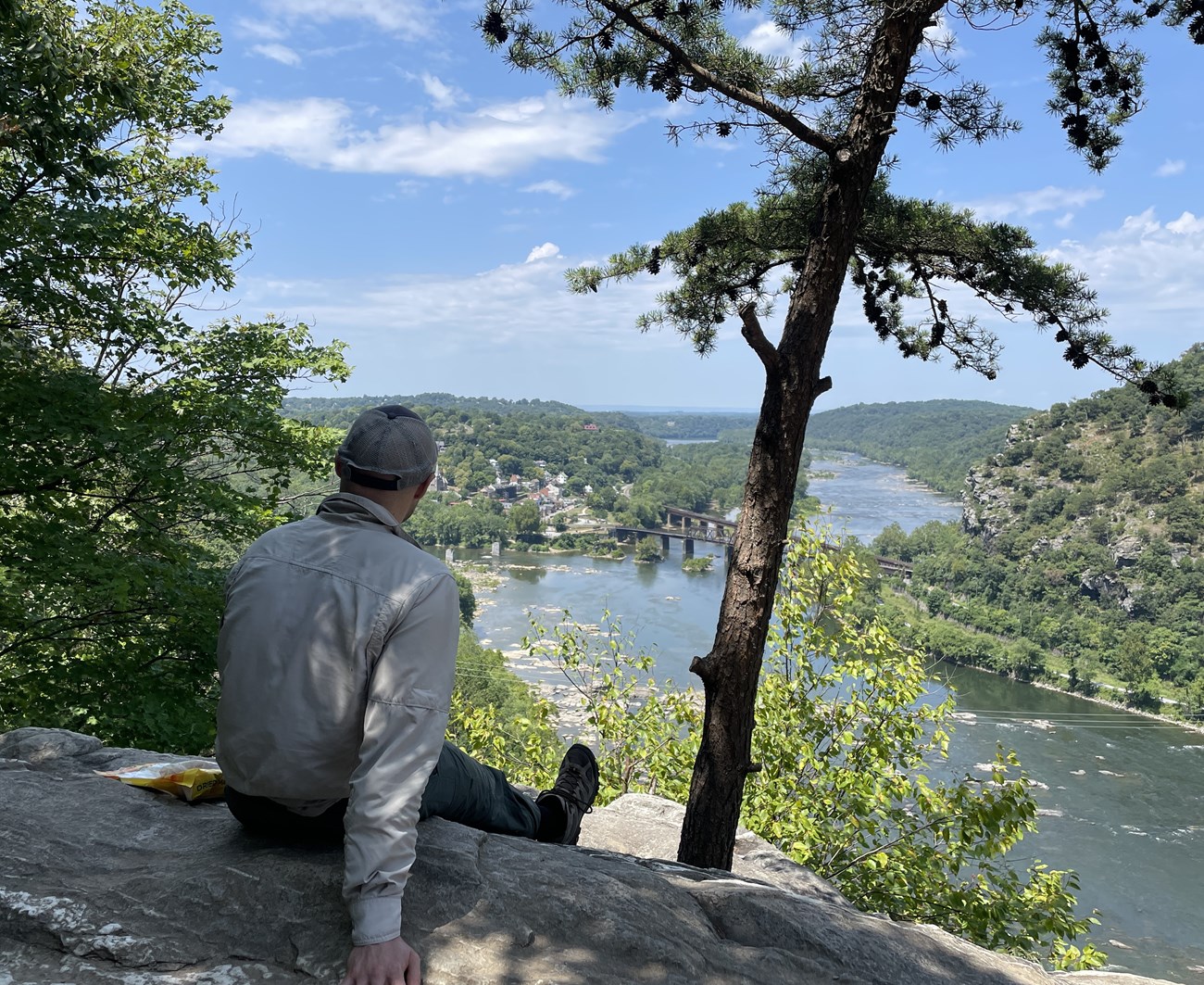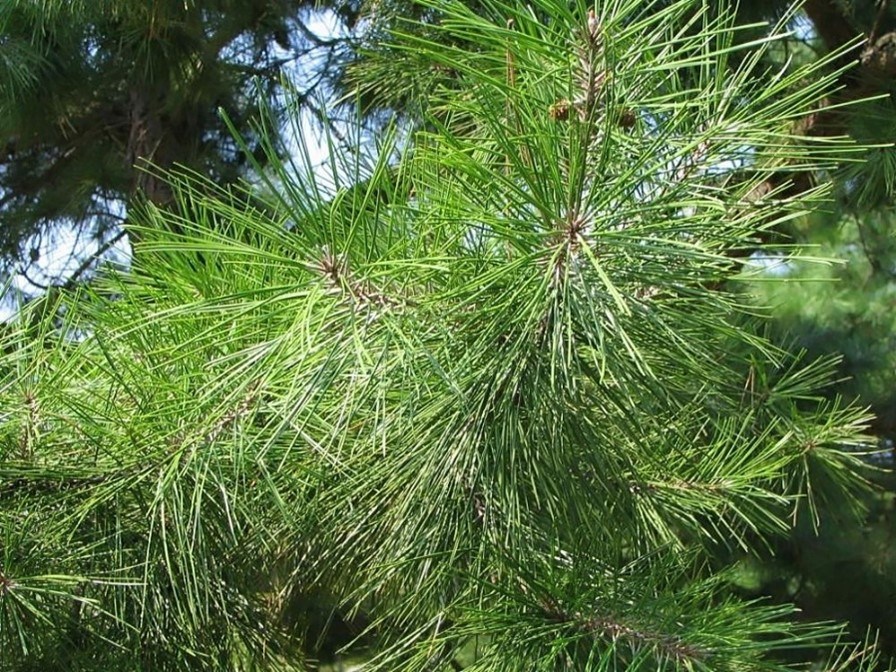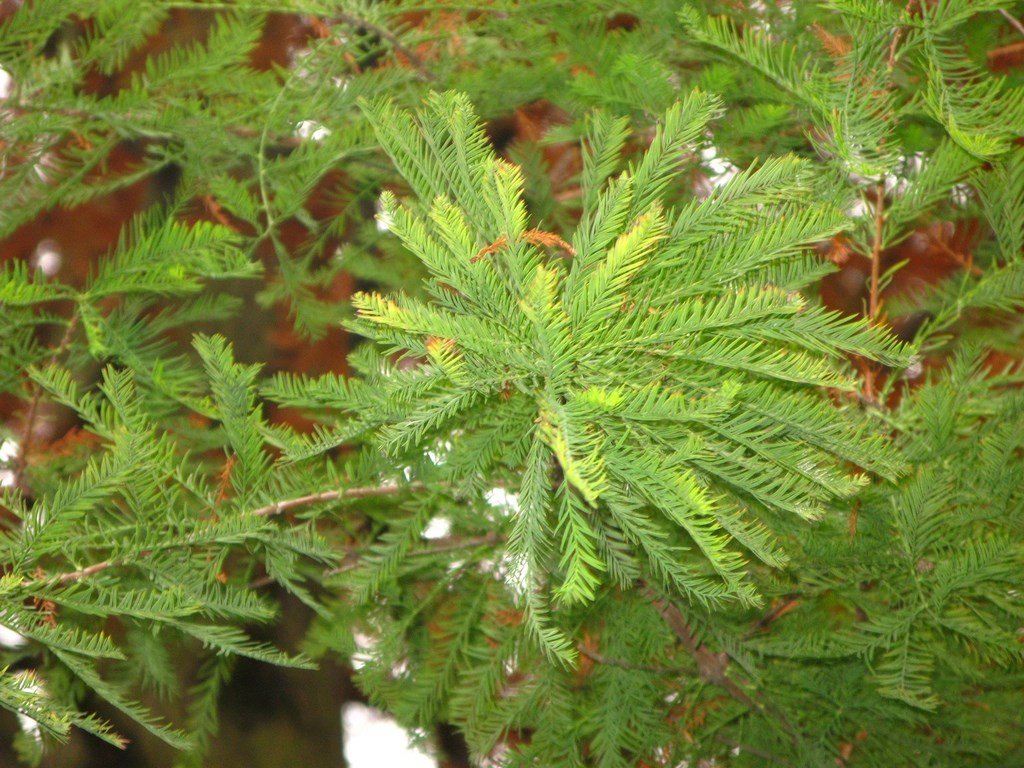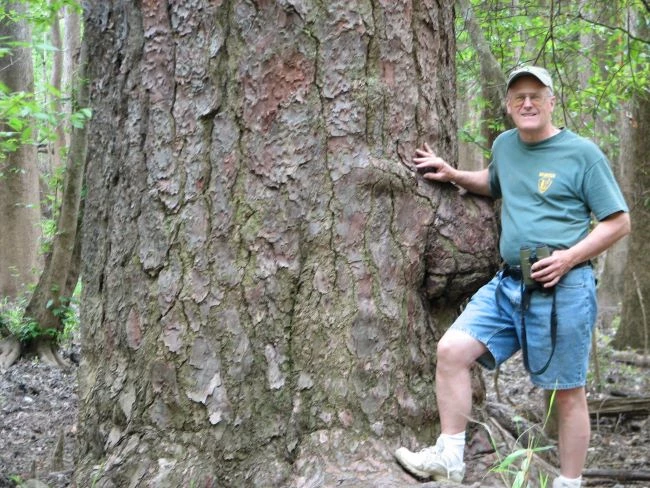Last updated: August 27, 2024
Article
National Capital Region Conifers

NPS/Brolis
Eleven species of conifers are found in the National Capital Region (NCR). They include not just pines, but also arborvitae, bald cypress, hemlock, juniper, and yew. Conifers are cone-bearing trees and shrubs with needle-like or scale-like leaves. All conifers bear pollen and seed cones. The pollen and cones are borne on the same plant in arborvitae, bald cypress, hemlock, and pines, and on separate plants in junipers and most yews. Most seed cones are woody. However, some resemble berries, like juniper seed cones that are actually fused fleshy scales, and yew seed cones that are actually outgrowths from the seed, called arils. Most conifers are evergreen but bald cypress and larch are deciduous. Conifers, along with cycads, ginkgo, and gnetales (e.g. ephedra) comprise the modern-day gymnosperms.
Overall, 16 species of conifers are native to the Potomac River watershed, but only eleven are found in the NCR. Except for the northern portion of the Baltimore-Washington Parkway, all parklands in the National Capital Region fall within the Potomac River watershed. Virginia Pine and Eastern Red Cedar are the most common conifers in our region. Uncommon conifers include the Eastern Hemlock, Eastern White Pine, Pitch Pine, Table Mountain Pine, and Yellow Pine. Our rarest naturally occurring conifers are American Arborvitae, Bald Cypress, Loblolly Pine, and Canada Yew.
The 11 Conifers of the NCR
Virginia Pine (Pinus virginiana) is our most common conifer and is well represented by stands in PRWI (see park acronyms). Virginia pine is a sun-loving early succession tree that colonizes fields and forest edges. They usually live less than 100 years and smaller individuals, such as saplings and seedlings, die when hardwood trees shade their canopies. I&M forest monitoring data has shown that in the last ten years this species has dropped from the third most abundant tree species in the region to the seventh. Most stands are now composed of mature trees, and regeneration is very rare under closed canopies. Unless fields are managed to allow succession or large-scale forest disturbances take place, regeneration will remain low. While this pine is presently secure, it will likely become far less common in the coming decades.

NCSU/ Suzanne Cadwell CC BY-NC 4.0
Eastern Red Cedar (Juniperus virginiana) is our second most common conifer. They are abundant in ANTI and MANA. Like Virginia pine, they are a sun-loving early succession species that colonizes old fields and forest edges, but rarely becomes established under the shade of hardwoods. Their future may be similar to that of Virginia Pine, and I&M data shows that their population density has decreased in the last decade. Still, old-growth red cedars grow on the shale barrens at CHOH in Allegany County, Maryland. These ancient trees are twisted like gnarled bristlecone pines. The extremely harsh conditions of the shale barrens give the drought tolerant cedars a competitive advantage over most hardwood species.

NPS/W. Kaselow
Eastern White Pine (Pinus strobus) is best represented in our region on dry slopes in the western portion of CHOH in the Ridge and Valley Province. CATO also has stately specimens of this pine. Naturally occurring white pine is uncommon in the mountains and rare in the Piedmont but it is planted extensively across our region.

NPS
Eastern Hemlock (Tsuga canadensis) is becoming increasingly uncommon. It is usually restricted to steep terrain on north facing slopes adjacent to streams. CATO formerly had healthy stands along its streams. Hemlocks of all ages have died due to attacks from hemlock woolly adelgid (Adelges tsugae) and elongate hemlock scale (Fiorinia externa). In 2015, NCRN I&M surveyed surviving eastern hemlocks at 6 parks: CATO, CHOH, HAFE, MANA, MONO, and PRWI. We found that while some hemlocks had survived, many had been replaced by deciduous trees that didn’t shade streams year-round. Some parks, like PRWI and CATO, are treating their hemlocks to ward of the woolly adelgid. Eastern hemlock is one of the most threatened species of conifers in our region due to impacts from insect pests and global warming.

NPS
Pitch and Table Mountain Pines (Pinus rigida and Pinus pungens) are often found growing in proximity to each other (e.g. CATO, HAFE, and PRWI). Both are fire adapted and, to a large extent, fire-dependent for regeneration. Most pitch and Table Mountain pines in our region are old age trees. The prospect for sustaining these pines as viable components of our flora is bleak unless fire is allowed to create conditions necessary to their survival. Little, if any, regeneration is occurring with these species in the NCR at present. Table Mountain pines occur so infrequently that they are not represented in any I&M vegetation monitoring plots. However, in 2024, CATO conducted a prescribed fire to encourage regeneration of fire adapted species like pitch and table mountain pines.

USDA/ Douglas Goldman CC BY-NC 4.0
Yellow Pine (Pinus echinata), also known as shortleaf pine, is quite uncommon in our region. They are usually observed as sentinel trees in oak forests or as isolated trees in stands of Virginia Pine. Stately examples of this southern pine are found in PRWI and ROCR. Old field habitat and fire scorched land is necessary for regeneration to occur. Little, if any, regeneration is occurring in our region.

NCSU/ David J. Stang CC BY-SA 4.0
American Arborvitae (Thuja occidentalis), also called northern white cedar is known only from limestone bluffs and cliffs along CHOH in Washington County, Maryland. Some cliff-side trees are gnarled and picturesque suggesting great age. Little is known about the stability of this relict population.

NCSU/ Joshua Mayer CC-BY-SA 2.0
Canada Yew (Taxus canadensis) is known from only one site. They occur within the legislative boundary of MANA just outside the park boundary on a steep north facing slope beneath a stand of eastern hemlock. This little population is thought to be a Pleistocene relict. Deer browsing and climate warming pose serious threats to this northern shrub species.

NCSU/ Salicyna CC BY-SA 4.0
Bald Cypress (Taxodium distichum) occurs naturally in tidal swamps along the Potomac River at Piscataway Park (NACE) and along Beck Branch next to the Baltimore-Washington Parkway. While bald cypress is certainly reproducing by seed in our region, it is also planted in some parks (e.g. Theodore Roosevelt Island). It is difficult to determine which of the naturally occurring trees are offspring of a wild lineage or offspring of cultivated trees. Regardless, this southern species is here in low numbers and climate warming may help it become better established. Of historical note, bald cypress was collected from Marshall Hall, now a part of Piscataway Park, in 1885. The collector regarded the stand of trees as “undoubtedly indigenous.” Also of interest is the famous stand of relict bald cypress trees growing at nearly the same latitude 20 miles east of Marshall Hall at Battle Creek. The NCR sits right at the edge of the natural range of bald cypress.

NCSU/ Crusier CC BY 3.0
Loblolly Pine (Pinus taeda) occurs naturally at PRWI, Piscataway Park, and along the Baltimore-Washington Parkway. Like bald cypress, some natural occurrences may be the offspring of trees planted long ago. Loblolly pine plantations are present in many NCR parks (e.g. ANTI, CHOH, MANA, NACE, PRWI, and ROCR). Nevertheless, native stands are present in the region in Prince George’s County, Maryland and are well documented historically in the Coastal Plain Province within the NCR. Loblolly pine is a southern species at the northern limits of its range that may benefit from climate warming.

NCSU/ Homer Edward Price CC BY 2.0
Native Conifers in NCR Parks
| Species Category | ANTI | CATO | CHOH | GWMP | HAFE | MANA | MONO | NACE | PRWI | ROCR | WOTR | |
| Virginia Pine (Pinus virginiana) | Early Successional Species | X | X | X | X | X | X | X | X | X | X | X |
| Eastern Red Cedar (Juniperus virginiana) | Early Successional Species | X | X | X | X | X | X | X | X | X | X | X |
| Eastern White Pine (Pinus strobus) | Slope and Upland Species | X+ | X | X | X | X | X | X | X | X | ||
| Eastern Hemlock (Tsuga canadensis) | Slope and Upland Species | X+ | X | X | X | X | X | X | X | X | ||
| American Arborvitae (Thuja occidentalis) | Northern Species | X+ | X | X+ | X+ | |||||||
| Canada Yew (Taxus canadensis) | Northern Species | X | ||||||||||
| Pitch Pine (Pinus rigida) | Fire-Dependent Species | X+ | X | X | X | X | X | X | X | X | ||
| Table Mountain Pine (Pinus pungens) | Fire-Dependent Species | X | X | X | X | X | X | X | ||||
| Yellow Pine (Pinus echinata) | Southern Species | X | X | X | X | X | ||||||
| Bald Cypress (Taxodium distichum) | Southern Species | X+ | X+ | X | X+ | |||||||
| Loblolly Pine (Pinus taeda) | Southern Species | X+ | X | X | X+ |
X indicates species is present (as originally published in 2011).
X+ indicates additional NPSpecies observations since the original publication.
The five species from the Potomac watershed not found in the NCR are balsam fir (Abies balsamea), common juniper (Juniperus communis), eastern larch (Larix laricina), red pine (Pinus resinosa), and red spruce (Picea rubens). These five live to the west in the highlands of the Appalachian Plateau.
CATO = Catoctin Mountain Park
CHOH = Chesapeake and Ohio Canal National Historical Park
GWMP = George Washington Memorial Parkway
HAFE = Harpers Ferry National Historical Park
MANA = Manassas National Battlefield Park
MONO = Monocacy National Battlefield
NACE = National Capital Parks - East
PRWI = Prince William Forest Park
ROCR = Rock Creek Park
WOTR = Wolf Trap National Park for the Performing Arts
Long Live the Conifers!
It is well known that the oldest living trees on earth are conifers (bristlecone pines) living in the western U.S. You may be surprised to learn that conifer species native to the eastern U.S. are capable of living to great ages too. For example, American arborvitaes over 1,000 years old grow in Tennessee. Older yet are 1,500 year old bald cypress trees living in North Carolina. Red cedars over 800 years old occur in Missouri. Hemlocks over 500 years old are in Michigan. White pines over 400 years in age live in Ontario. Many pitch and yellow pines are recently documented in the eastern U.S. in excess of 300 years in age. table mountain pines over 200 years old occur in the southern Appalachians and loblolly pines over 200 years old are found in Congaree National Park in South Carolina.

NPS
Data Sources
- Davis, Mary B. 1996. Eastern old-growth forests: prospects for rediscovery and recovery. Island Press. Knowlton, F.H. 1886. Additions to the flora of Washington and vicinity from April 1, 1884 to April 1, 1886. The Biological Society of Washington, Volume III, 1884-1886.
- Krajick, Kevin. 2003. Methuselahs in our midst. Science Magazine, Vol. 302, October 31.
- Mazzeo, Peter M. Taxus canadensis rediscovered in the Virginia piedmont. Castanea 36 (3), September 1971.
- Pielou, E.C. The world of northern evergreens. Cornell University Press, 1988.
- Schmit, J.P., and J.P. Campbell. 2006-2010. National Capital Region Network forest vegetation monitoring reports 2006-2010. Natural Resource Data Series NPS/NCRN/NRDS, National Park Service, Fort Collins, Colorado.
- Shreve, F., M.A. Chrysler, F.H. Blodgett, and F.W. Besley. 1910. The plant life of Maryland. Maryland Weather Survey Special Publication Vol. 111, Johns Hopkins University Press, Baltimore.
More on Conifers
The NCR Network’s Inventory & Monitoring program (NCRN I&M) monitors trees like conifers as part of a larger forest vegetation monitoring effort. To learn more about this monitoring, visit the NCRN I&M vegetation monitoring page to view the latest reports and resource briefs.
This content was originally published in 2011, and was republished in an online format in 2024.
Tags
- antietam national battlefield
- catoctin mountain park
- chesapeake & ohio canal national historical park
- congaree national park
- george washington memorial parkway
- harpers ferry national historical park
- manassas national battlefield park
- monocacy national battlefield
- national capital parks-east
- prince william forest park
- rock creek park
- wolf trap national park for the performing arts
- ncrn
- im
- ncrn im
- conifer
- pine
- bald cypress
- hemlock
- juniper
- yew
- arborvitae
- dc
- maryland
- virginia
- forest
- forest regeneration
- fire regeneration
- ncr
- trees
- nature
